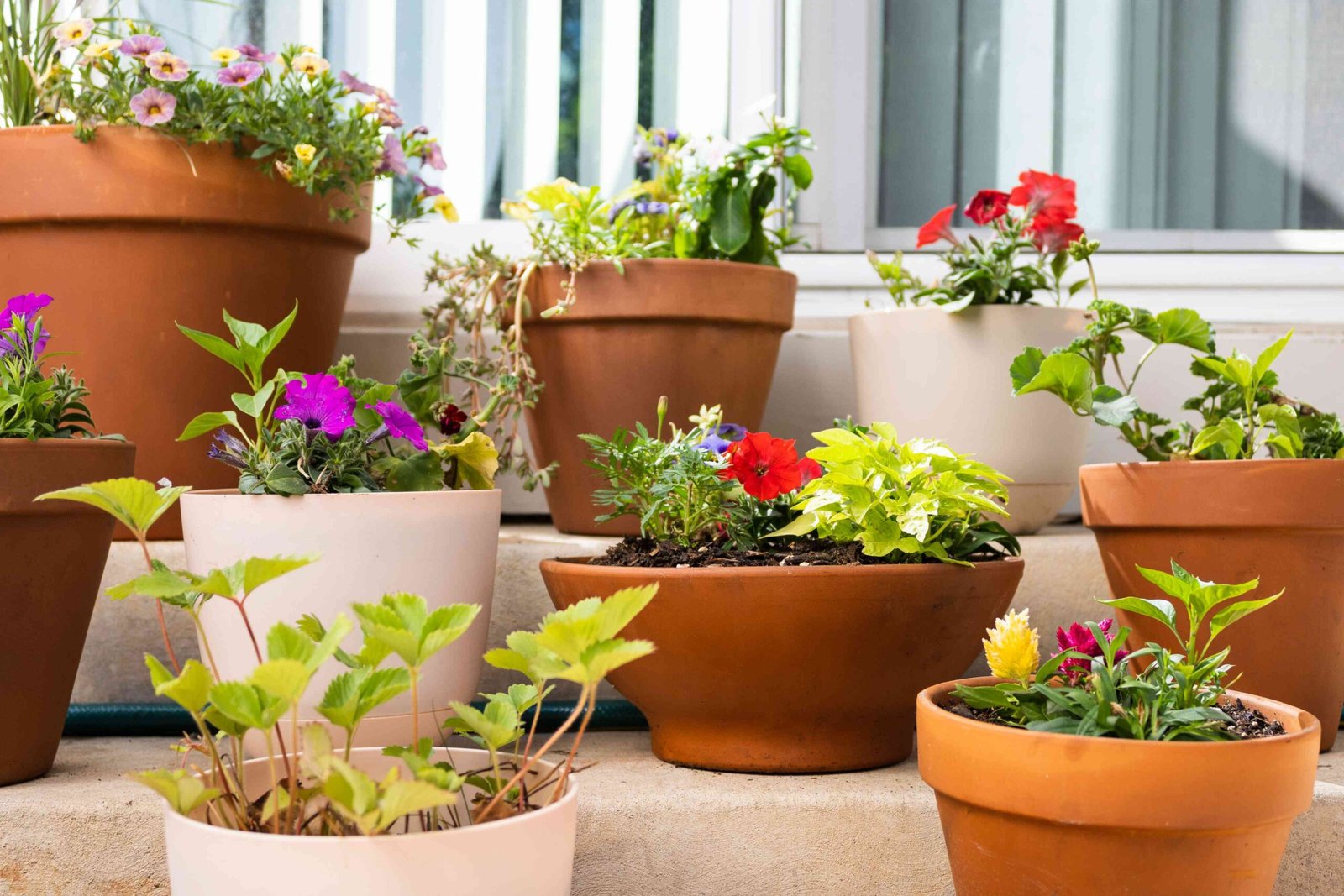Small gardens, porches, and patios are perfect for container gardening! Containers allow for easy transporting, cultivating, and harvesting. Seasoned grower Jerad Bryant shares nine easy ways to encourage healthy and robust growth from your potted plants.
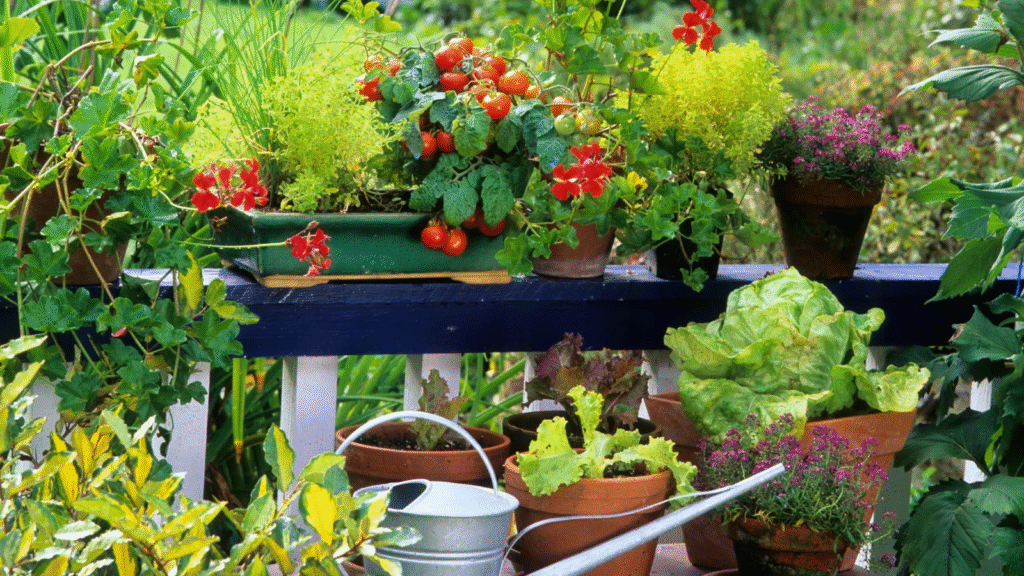
Potted plants are just like those in the ground, but their roots get to relax in a cozy, enclosed space. Once you set them up right, they’ll thrive with minimal effort. The secret? Good materials, smart planting, and proper care—these are the keys to growing healthy container plants.
Maybe you’re gardening on a patio, renting your place, or just want extra planting space in your yard. Whatever your situation, these tips will help you create the perfect spot for growing veggies, fruits, and wildflowers.
We’ll go over the best potting soils, which fertilizers to use, and how to care for your plants after transplanting. The right materials depend on what you’re growing—cacti and succulents have different needs than fruit trees or vegetables. Knowing your plants’ preferences is the best way to keep your container garden thriving.
Start With Good Soil
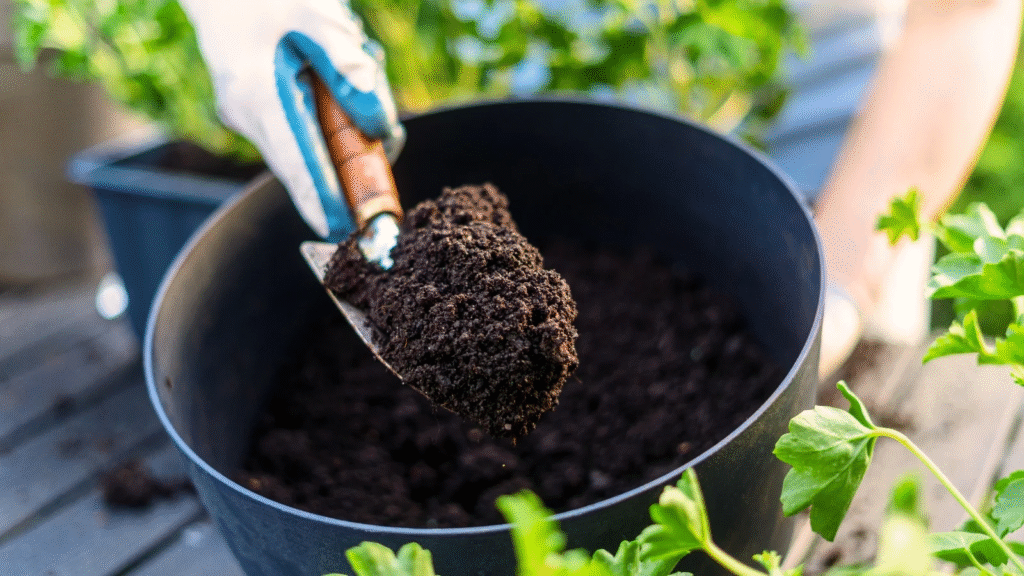
Good drainage is a game-changer for picky roots.
First things first: pick the right soil! Plants in the ground can handle iffy mixes with too much clay or sand, but potted plants are pickier. They like loose, airy, well-draining blends with minimal clay. The exact mix depends on the plant—succulents, cacti, veggies, and perennials all have different preferences.
Cacti and succulents love fast-draining mixes with sand, perlite, or pumice—they’ll rot in soggy soil. Veggies and perennials, on the other hand, do best in moisture-retentive blends.
For outdoor plants, go for potting soils with natural ingredients like aged forest products, worm castings, and compost. A great choice is FoxFarm’s Happy Frog®—it’s packed with nutrients, microbes, and everything roots need to flourish in containers.
For desert-loving plants like cacti, mix in coarse sand or crushed granite to keep water from pooling. Epic Gardening’s Garden Hermit Jacques Lyakov recommends this blend:
- 3 parts Happy Frog® Potting Soil
- 2 parts Coarse Sand or Crushed Granite
- 2 parts Pumice or Perlite
Pick the Right Container
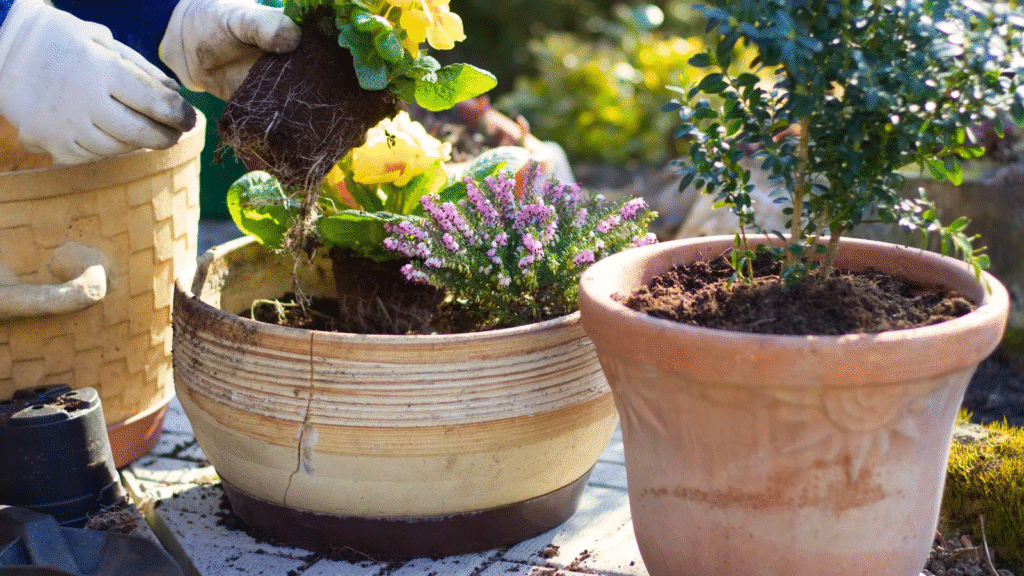
A deep pot now means fewer headaches later.
Size matters! Some plants have deep roots, while others spread out near the surface. Taproot-heavy plants will struggle in shallow pots.
Most plants need at least 12 inches of depth, but heavy feeders like tomatoes, peppers, and squash do better in 24-inch-deep containers. Start with the right size, and your plants will reward you with strong growth.
Fruit trees and big plants need serious space—think 20-gallon pots or larger for apples, peaches, and plums.
Some containers have self-watering reservoirs, where water seeps in through a wick. These can be tricky—many gardeners accidentally overwater by treating them like regular pots. Instead of top-watering, only refill the reservoir when it’s empty. These are great for vacation homes or places you visit occasionally.
Follow Spacing Guidelines
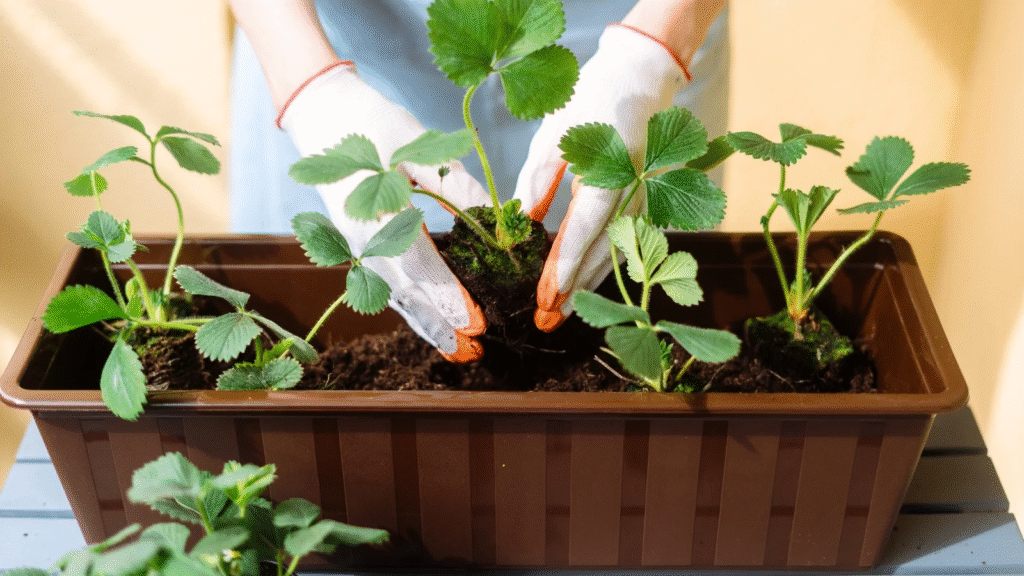
Smart spacing saves you from thinning later.
Just like container size, spacing is crucial. Too close, and your plants will produce less. Too far apart, and weeds will sneak in.
Seed packets usually list spacing needs—follow them even if you’re planting saved seeds. For example, if you save broccoli seeds, look up spacing for a similar variety like ‘Di Cicco’ online.
Leafy greens are the easiest to pack tightly—you can harvest them gradually, letting neighboring plants fill the gaps. Cut lettuce a few inches above the soil, and it’ll regrow in cool weather.
Choose a Good Location
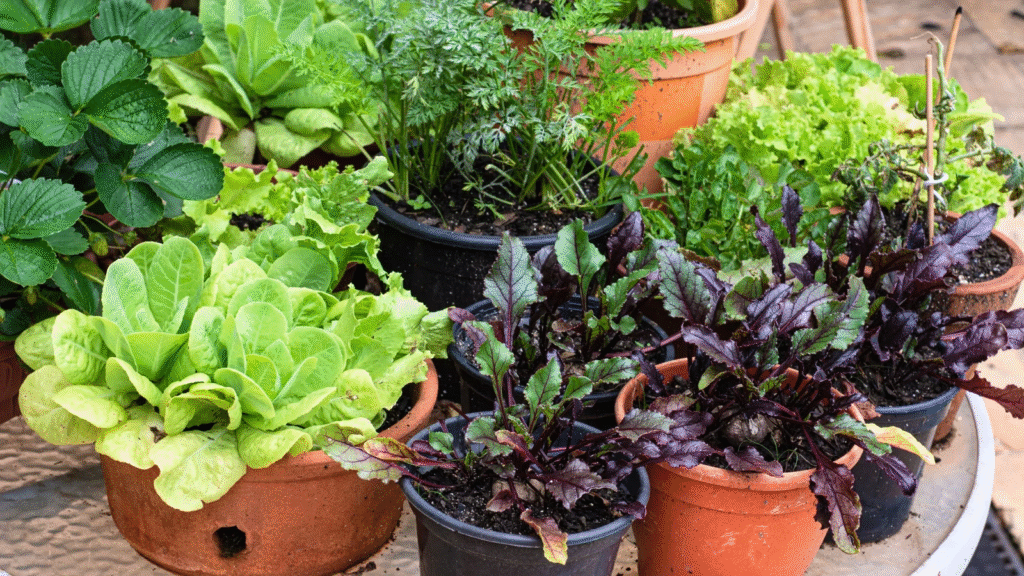
Lettuce appreciates a little shade in the afternoon.
Different plants have different light needs. Sun-lovers like tomatoes, peppers, and fruit trees want 6–8 hours of direct sunlight. Leafy greens and shade plants prefer partial shade.
Since pots are portable, you can move them as needed. If leaves start burning, give them shade. If they’re stretching for light, give them more sun.
But don’t move plants suddenly—their roots like stability. Gradually introduce them to new spots over two weeks, increasing exposure each day (like hardening off seedlings).
Add Compost
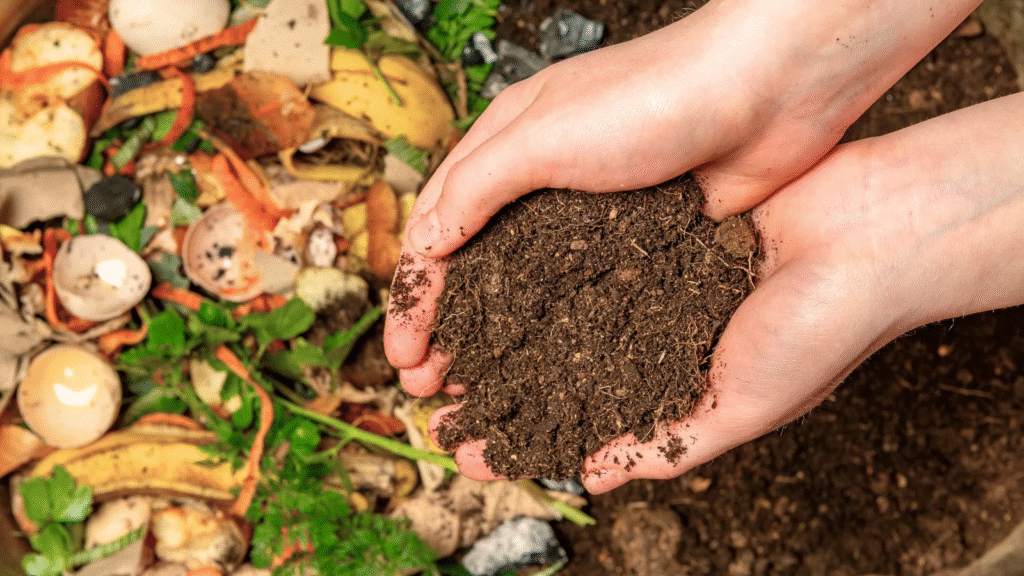
Compost is a garden’s best friend.
I swear by compost—it’s a soil superhero! You can make it at home by decomposing kitchen scraps, yard waste, and leaves. After a few weeks of turning, you’ll have a rich, crumbly soil booster.
For potted plants, spread 1–2 inches of compost on top (avoiding the stem). Water it in, and watch your plants take off!
Other great mulches: straw, leaf mold, or wood chips. Fall leaves are a free, easy option!
Fertilize Regularly
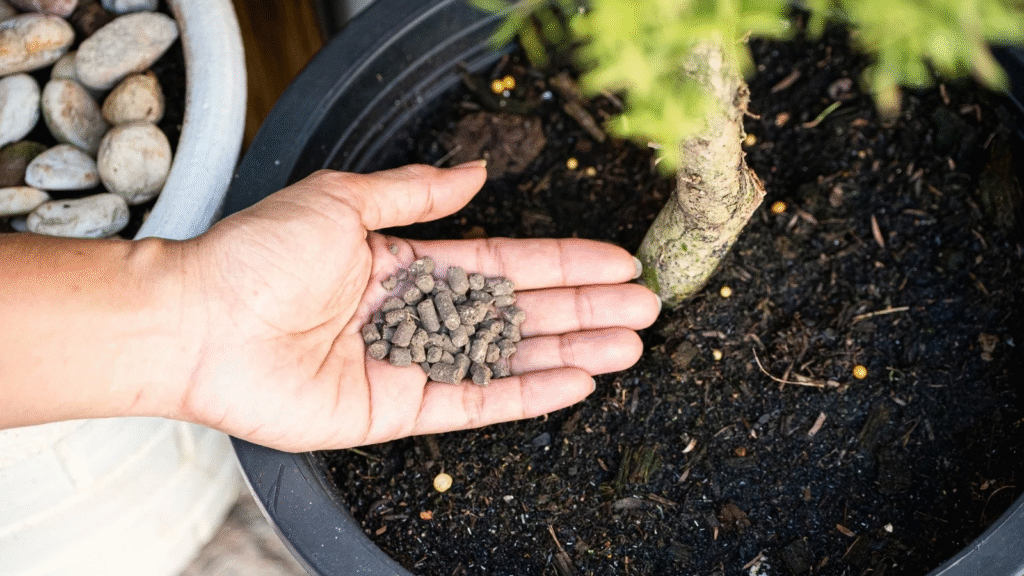
Acid-loving plants perk up with low-pH food.
Regular feeding keeps plants growing strong. Without nutrients, they’ll stall, weaken, or attract pests. The right fertilizer depends on the plant:
- Flowers & fruits need phosphorus/potassium.
- Leafy greens crave nitrogen.
- Blueberries & rhododendrons prefer acidic mixes.
You’ll find liquid, granular, and powder fertilizers (organic or synthetic). Organic is gentler and won’t cause salt buildup. Always follow the label’s instructions.
Keep the Soil Moist
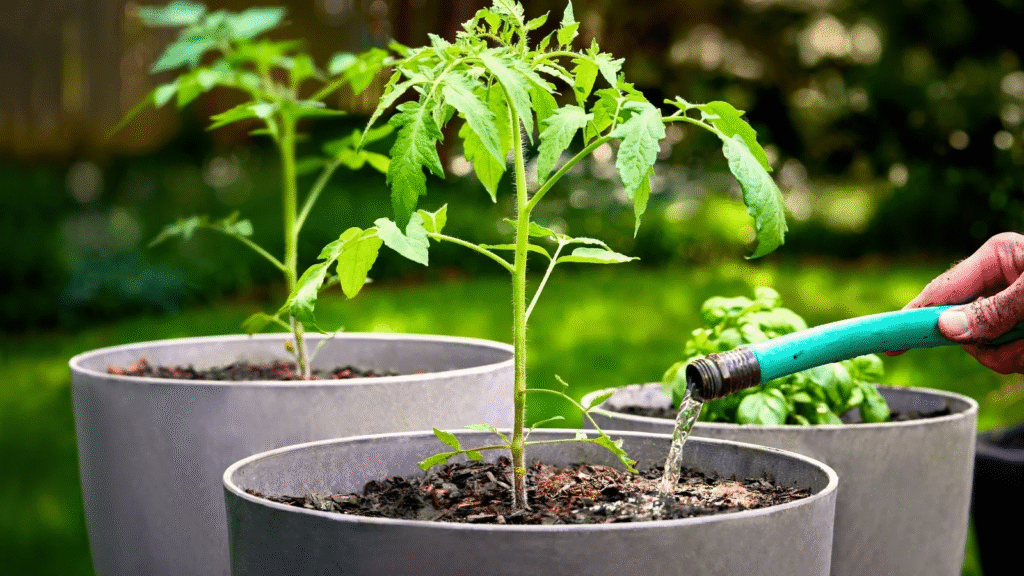
Deep watering helps beat the heat.
Potted plants dry out faster than in-ground ones. Water is a must—it moves nutrients from roots to leaves. Without it, plants wilt fast.
Water needs vary:
- Cacti & succulents—water sparingly.
- Veggies & annuals—keep soil consistently moist.
Most plants need water every 1–2 weeks (more in summer, less in winter). In peak heat, you might water daily.
A properly sized pot prevents water loss. Root-bound plants can’t absorb water well—repot them if roots circle the container.
Protect Tender Plants
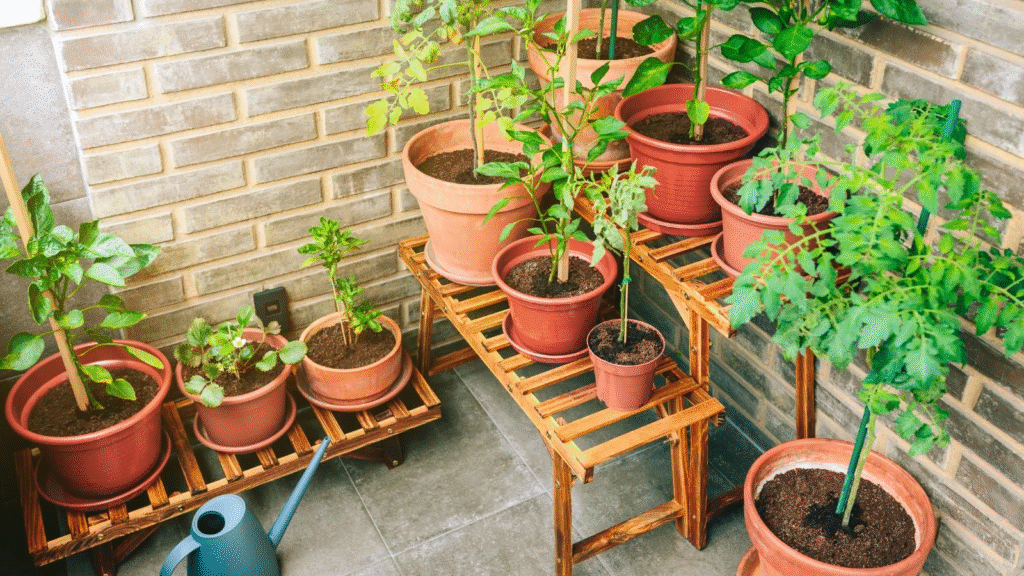
Shade cloth keeps plants cool during heat waves.
Don’t let frost or sun scorch your plants! Frost cloth shields them on cold nights—just remove it when temps rise.
For heat protection, use shade cloth, umbrellas, or taller plants. Move pots to shade in hot afternoons.
Extra tips for heat waves:
- Keep soil moist (water daily).
- Move pots near walls (warmer in winter, cooler in summer).
Frost-tender plants (like peppers) may need to overwinter indoors. Take cuttings in fall and grow them inside until spring.
Repot Overgrown Plants
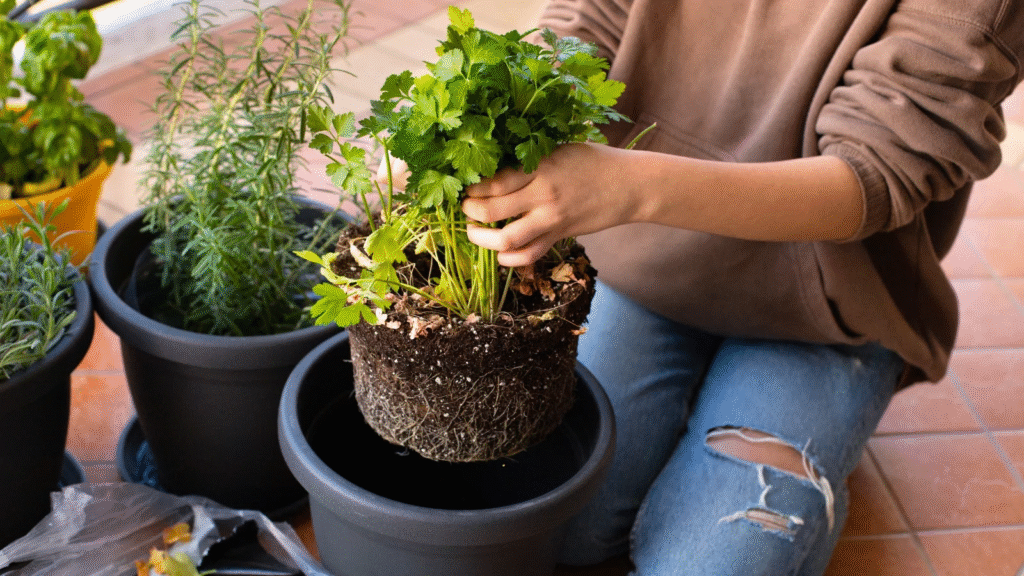
Time to repot when roots peek out the drainage holes.
After a year or two, many plants outgrow their pots. Spring or fall is the best time to repot.
How to repot:
- Tip the pot sideways and gently knock out the root ball.
- If roots cling, cut them loose with a hori hori knife.
- Fill a new pot with fresh soil (like Happy Frog®).
- Replant, water thoroughly, and let it drain.
Watch for roots poking out of drainage holes or soil—that’s your cue to repot!

